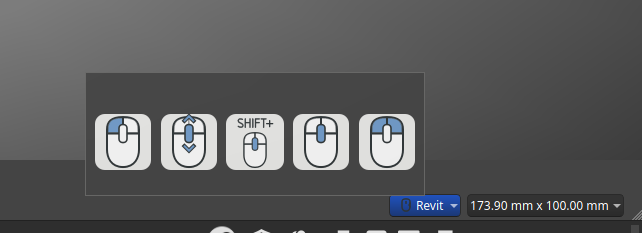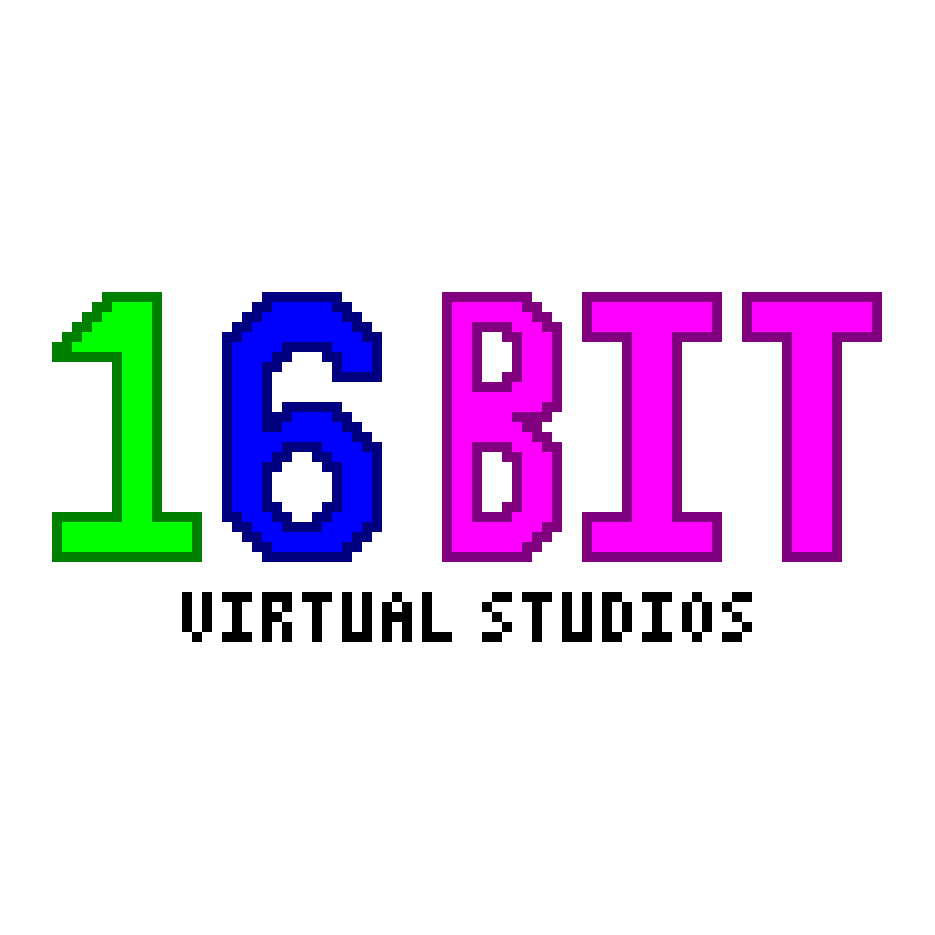So, I’m trying to print some older models from thingiverse and I have discovered that basically all the files I want to print have glaring flaws in them.
Internal free floating structures, connector pieces and holes that are the exact same size… So on and so forth…
Do I need to learn a software like CAD or Blender to fix these? I seem to be able to do some basic stuff in Orca Slicer but it honestly seems like as much of a pain to modify the parts there as it would be to use a real software.
Is there one that’s easier? I think I messed around with SketchUp once upon a time.
I am worried this feels like opening a can of worms just so that I can make a thing that already exists in a dozen forms better.
Tinkercad (free, closed source, in browser) is what I use. It’s very basic, but easy to learn.
So many CADs.
I grabbed FreeCAD but it made no sense to me.
So, FreeCAD. It’s a beautiful hot mess. There’s a 1.0 in beta right now that’s bringing some much needed changes.
FreeCAD has a lot of parallel capabilities; it has an architectural workbench for drawing buildings, a Drafting workbench for more traditional 2D drawing, the Part workbench for a weird kind of boolean approach, and the Part Design workbench for a more typical sketch-and-extrude parametric modeling workflow like Fusion360, Inventor or OnShape.
The workflow is you create a sketch and draw a 2D shape, and then extrude (FreeCAD uses the word Pad) it into 3D space, then you can draw further features on that to design the shape you want.
The basis of how it works is somewhat unintuitive at first. “Parametric” means you draw using rules. There’s a piece of software out there called OpenSCAD that is a very pure implementation of this because you “draw” by typing code in a kind of programming language. FreeCAD lets you represent rules by drawing things with the mouse. Rules like “this is a straight line. It is parallel to the X axis. It is 5cm long. The leftmost endpoint is 3cm from the X axis and 4cm from the Y axis.” There’s only one way to draw that line. Those rules may be called Constraints or Dimensions. The powerful part is you can later change one of the rules, like “Did I say 3cm from the X axis? I meant 4cm” and it’ll redraw the whole part for you. Get your head around that concept and CAD software will unlock.
The UIs are different, but the general concepts are similar for FreeCAD, OnShape and Fusion360, sometimes tutorials for one will be useful for learning the others.
Oh man I wanted to mention Ondsel but I just saw that they’ve shut down and it really bummed me out…
They did? I’ve been using it
They just announced it a week or two ago, but they’re keeping the server up for “a reasonable period” to allow users to migrate. From my understanding, many of their tweaks have been integrated into 1.0 and the team all plans to continue working with FreeCAD and submitting improvements.
All of their changes will be merged to freecad 1.0 apparently outside of a few UI changes that will be add-in options.
I was kind of wondering how long that project would last.
Damn, that’s really sad
I second tinkercad for super basic parts. Need to print a knob for a radio that isn’t on thing-verse? 20min in tinkercad.
For blender basic things to learn could be plugging a hole in a part and adding a smaller or bigger one to match the screws you have on hand.
Or cutting a part in half to extend it, fill in the gap.
Yeah abandon FreeCAD for now. It’s a powerful FOSS option, and the new v1.0 looks promising, but I second TinkerCAD to learn. It’s intuitive, and most of the principles you learn will translate fairly easily to other CAD software. Unless you’re trying to sculpt organic shapes, I’d focus off TinkerCAD
it made no sense to me
That’s all CAD software. You can’t just jump in and intuitively learn it by just doing it. It’s like trying to learn a programming language. You need a solid tutorial to explain the basics, at a minimum. Even with something simple like TinkerCAD.
FreeCAD was probably the worst choice. Give TinkerCAD a try. I know the FOSS community will hate me for saying this, but I like Autodesk Fusion for a full featured CAD package. It has a very steep learning curve, like all CAD software, and you need to watch some videos first. You will make a ton of mistakes and do even simple things wrong at first, but once you get going, it’s great to use.
I’m both used CAD software professionally to do engineering and developed CAD software professionally, and TBH I, too, find FreeCAD difficult to use.
(I haven’t tried the latest versions that are supposed to be better yet, though.)
Tinkercad is in the browser, super easy to use.
Tinkercad is just combining basic shapes, so there’s basically no learning curve.
Yeah I noticed that. Kinda feels like doing it in the slicer but with brighter colors.
In my view CAD is always worth learning, especially if you understand what prints best on your printer.
FreeCAD is basically the worse possible beginners tools. Don’t get me wrong when you learn it, it’s good and comparable to professional CAD software. But the learning curve is dumb.
Learn the basics first. TinkerCAD is free (from Autodesk) and will get you started. But if you want something which would take you further Fusion360 is fantastic for beginners.
The workflow of CAD is as follows. Sketch -> Action -> Sketch -> Action. Lets say you want to make a box with a hole in it. Sketch the outer box -> Extrude it -> Sketch the inner box -> Extrude/Cut it.
it’s good and comparable to professional CAD software. But the learning curve is dumb
I have to agree on that. I feel I can only use FreeCAD because I’ve taught myself SolidWorks years ago and I know what to look for when I want to achieve something. Or said another way, when I want to do something in FreeCAD, my though process is always “In what roundabout, convoluted way can I do in FreeCAD what I used to do in 2 clicks in SolidWorks?”. The only reason it works for me is because I know it can be done and I know the intuitive way it should be done.
I kind of have the same issue in Blender: I’ve been trying to teach myself Blender for years, but no matter how hard I try, it’s just not letting me in. Unlike FreeCAD, I have never known any other software similar to Blender, so I don’t know what I’m doing - or rather, what I should be doing - and it’s excruciatingly frustrating.
The commercial alternative to blender is software like Maya. But I too struggled with Blender, however I feel that’s because 3D modelling is different from CAD, since modelling is like molding clay into the shape you want it in, rather than accurately measuring it out like in CAD.
Plasticity. (xnurbs is so damn nice)
Yes 3D modelling like in blender can be quite precise but it’s a completely different mindset than CAD, much more about taking basic shapes and sculpting into what you want. Of course then there’s the whole animating/shading/lighting and so on which don’t exist in CAD at all.
I have trouble remembering what key pans and what key rotates view and the thought of actually figuring out how to manipulate the 3D file in FreeCAD felt like it was gonna melt my brain.
But thank you for the recommendation. TinkerCAD made me feel like I was playing with children’s blocks but at least I understand them.
I also think I’m gonna try get started on learning something else after I brute force this stupid single print. And I think it will just be trying some of them out.
Yeah Fusion is the way to go, especially if you are learning. Lots of hate for it around here, due to Autodesk endlessly changing their policies. But there’s no point in learning the basics when you don’t know if it’s you… or the software.
But if your issue is just navigating the 3D space in FreeCAD, you can set it such that it’s the same in TinkerCAD/Fusion 360. FreeCAD calls it Revit, and you can set it in the lower right corner. Hold you mouse over it to show tool tips.

If it had as many 2 minute long tutorials on youtube explaining exactly the feature I was looking for as F360 does, FreeCAD would be the best case software
The time and effort you put in to learning 3D Cad will more than pay off for you in your ability to make things you need that someone else hasn’t yet made and posted online. Sure, it will be a bit of learning curve, but what are we here for but to learn and grow?
I use FreeCAD which is FOSS. There’s a great series of Youtube Videos by Mango Jelly on how to use it.
I am down to learn. It’s why I asked but I will say there is a dozen softwares and forks out there and I am not in the right space to be able to spend large amounts of time learning the deep ins and outs. And I generally don’t feel a constant need to design new pieces for myself.
But thank you for the suggestions and the video suggestions as well.
I’ve been reading the other comments, and while people are encouraging, their comments seem a bit too “you HAVE to learn CAD.” You definitely don’t NEED to know CAD. I made basic parts and modifications in the slicer for nearly a year after I started printing, and it worked really well. However, if you are considering learning a full CAD program, I have two pieces of advice.
First pertains to if you are working with functional parts. Then you are talking about a parametric CAD program (fusion, onshape, FreeCAD, etc.). In this case, I think it’s worth learning for you, and it’s not as hard as it seems. You say you have SketchUp experience, so I’m assuming you have decent spatial reasoning. I know someone with no tech literacy nor programming experience who learned a CAD program very well in less than a month of following tutorials in her free time. Just give it a try, and it’s a skill you’ll be happy to have.
If you are working with cosmetic parts like miniatures and helmets, then you might need to use something like Blender. Admittedly, that can be even more challenging than the other CAD programs I mentioned. However, if you spend a few hours learning some basics from YouTube, you should be able to do fundemental things like fixing holes.
Hope this helps. Good luck with your printing endeavors!
Most of the CAD software mentioned here will not be super helpful in modifying meshes (like STLs), but they’re great if you want to redesign the part from scratch :)
Tinkercad is the exception, as it works with meshes and booleans.
IMO it’s worth the time and effort to learn the basics. You don’t need to be an elite level modeler because you’re not modeling for animation or games. I’ve had good luck with simple fixes and mods in Blender.
My experience is entirely with SLA, however, FDM might be a bit trickier.
Yeah I think people forget about print orientation and stuff like that with FDM.
I think the person said they printed with supports on but didn’t have great results and my thought is how they didn’t realize they made supports inside their part to get it to print that could have been solved with some mounting points for the bridging.
Which in theory sounds like something I could do… No animation…
But man slicer modifiers made me want to go insane and I barely managed to learn Photoshop, gimp, and the like.
But thanks. I’m noticing basically 2 camps for software and it helps at least narrow down what I’ll find support for using I guess.
Gimp and PS made no sense to me. Ive learnt $d modling over time and don’t it fairly easy.
Started with Tinkercad. Its fine for the basics. Square plus circle minis triangle etc. It dosnt have a timeline or parametric though, so small changes are pretty hard.
Mixed to fusion360. Free if you can navigate the site. Heaps of tutorials non lone and really solid to. Basically draw in 2d and extend. Draw in 2d and cut. Heaps non other use full ways to modify things too. Its parametric so you can say one side is X long. And change X and the model will scale.
Focus on the 2d shapes, fully constraining them and making them simple.Moved to Onshape. Its not got the 10active models that fusion has. And runs (surprisingly well) in browser. i can jump on any PC (work cough) and make edits. The tools (for most people) are on par with fusion and I found it more initiative.
Watch heaps of builds on fusion and you’ll get the just pretty quickly.
Good old Thingiverse. You’ll get a great education in now not to design things for 3D printing wading through that slurry pit.
Yes, consider a 3D printer useless if you don’t know how to use 3D modeling software.
If all you have are STLs then you’re pretty limited. I use Meshmixer to do basic modifications or tweaks to STLs but it’s not super user friendly.
Yeah… Just STL files.
And I mean trying to add anything in orca slicer seems to be far worse. I got lucky with modifying a single piece in orca slicer via a million measurements and micro adjustments but it felt like pulling teeth from a shark.
If you happen to have any background with coding, I recommend OpenSCAD. There are a (relatively) limited set of instructions, easy to pick up if you do any other coding.
Get SketchUp Make 2017 from the wayback machine. Is super intuitive and you can import stl files directly.
All the best softwares are dead. I apparently used to use the Microsoft 3D builder app to do this but it’s been also removed from the Microsoft store.
But good to know that some of these can still be got somehow.
Ill have to check this out. Any idea if it plays nice with wine?
I just switched to Linux and couldn’t figure out the install. But I literally just switched to Linux, so I don’t know, it could work great for all I know.
You and me both, I shall report back after I try SCIENCE!
This post turned out to be a bit of a rant about what drives me to model my own designs most of the time. In short, it isn’t required, but I highly recommend it.
I’d say that most people who own 3D printers have little to no skill in modelling and are happy printing whatever they can download online. Maybe they hit a point where they want more, but until then learning modelling isn’t a useful skill for them.
Personally, I’m a designer at the end of the day. 3D modelling is a crucial tool in taking my ideas and bringing them to life in a way that can be passed to a manufacturing process and made into a physical object. 3D printing just happens to be the manufacturing tool I use most often for personal projects because it is what I have the easiest access to. If I had a machine shop, I’d use that too. When working on high volume products I’ll design for injection molding, die casting, sheet metal, compression molding, etc.
I’m not against utilizing models people have already put online that solve the problem I want, that is just efficient use of resources. But I agree, most models out there are very poor quality so I pretty rarely use downloaded models. Heck, I just re-modelled Gridfinity bins because I couldn’t find a parametrically adjustable model for SolidWorks that I was happy with (on that note, the dimensional documentation for Gridfinity is straight garbage and I’m still not sure I have it right) and those are some of the most widely available models out there.
I also absolutely despise STL and other non-parametric file formats for sharing designs. They are terrible, inefficient formats that make files very hard to edit. Most people don’t export them in high enough resolution resulting in horrible looking faceted models. The community needs to fully accept STEP as the file format of choice now that any slicer worth using can import them properly.
I prefer parametric SCAD models. Maybe because I’m more of a developer than a designer.
SCAD allows for really cool things like I did with a parametric calendar model - you just input the year and it automatically calculates the first day of the year using a clever algorithm. It also works with leap years automatically, which is less cool but still very convenient.
But still doesn’t have chamfers or fillets.
I mean, OpenSCAD has primitives which you use to create your own shapes. It does have chamfers, if you add a module for that. Or download someone else’s code.
I was in a simiar boat, but once I started learning it really took off and I couldn’t find enough things to model/fix! I started with meshmixer, it’s pretty simplified but still somewhat powerful and I think Windows only. Once I found stuff I couldn’t do with it I switched to blender and now I’m much faster with it. I found there are some things each implements better so if having an issue I’ll switch and try something else. I highly recommend picking one and watching youtube videos specific to what you want to change in a model
Edit: you may be able to get by on some of the connectors by lowering flow too, depends on how dialed in your printer is, everyone needs different tolerances
Yeah. I will want to learn some more of this soon but part of it is picking one that doesn’t drive me batty and taking some time to work with it before trying to print something complex.
But as for now I found outer wall order and x/y home compensation worked for me really well to get the pieces together. Slicer settings brute forcing for the temp win.
part of it is picking one that doesn’t drive me batty and taking some time to work with it
CAD and 3D modeling can look overwhelming for a beginner, but there are some tools that are pretty quick to pick up the basics of.
Tinkercad is probably the fastest for most people to get some basic results from.
Personally, I have been working on learning FreeCAD. The newest version is a major step forward in capability and the learning curve isn’t too steep - especially with some of the tutorials I’ve found on youtube.
Blender is it’s own beast - super powerful, but very different that anything else I’ve tries to use.
I can’t compare it to the cad examples but meshmixer is definitely easier to use for small stl edits than blender, especially for things like cutting and keying parts. If you are just trying to make a pin smaller or hole larger, editing the xyz of specific points in blender may be easier depending on shape. Good luck!
I was recently roughly in the same place. I have played around in the past with a few things, but there were reasons I didn’t really get into any of them: Fusion360 and their increasingly limited free options, OnShape and their online only thing… so on…
FreeCad has a new release candidate for what they’re calling version 1.0, meaning they consider it a mature and functional piece of software. I’ve been working with it, and yeah… it’s not perfect, but it’s definitely usable now. I figured if I was going to put all that effort into learning something, I might as well learn something that would always be free.
I had a booth about this at the Bay Area Maker Faire lately.
If we’re all printing the same object on our 3D printers, it’s proooobably a lot less trouble to just have someone injection mold it and save us all the trouble. 3D printers are really great for one-offs and mass-customization and things like that. Aaaaaand, I feel like it’s kind of an under-appreciated problem in 3D printing. Because, yeah, CAD is hard and we’re never going to reach a world where every 3D printer owner is very very comfortable with CAD, and so it should be more of a concrete goal for the 3D printing community to make sure that we’re focusing on this problem. It’s important that every 3D printer owner can do at least some amount of tweaking and customizing, otherwise we’re failing as a community.
Now, I don’t Tinkshame. I spent a lot of time learning Blender, FreeCAD, and OpenSCAD to prove Naomi Wu’s assertion that we should all just get over ourselves and use TinkerCAD. The only real problem with it is that it’s not really free, it’s “free at the pleasure of AutoDesk” where they could raise the “Mission Accomplished” banner at some point and turn it off. And there’s not really an open source version of it for roughly the same reason that random thingiverse models are always kinda halfassed and bad. Doing a good TinkerCAD-but-actually-free-by-some-definition is actual work to get everything right and polished and documented and bug-free and nobody really wants to pay for it.
Also, maybe I am pedantic and obsessive, but I don’t really like screwing around too heavily with models in a slicer, so I’d rather they take some of the magical code in the OrcaSlicer/PrusaSlicer/SuperSlicer tree and actually organize it into something that could be TinkerCAD-esque?
Anyway, the core of the talk of my booth was systems and libraries of 3D printable objects. So, for example, there’s the Honeycomb Storage Wall system and some of us have been writing some neat lil OpenSCAD libraries and models for it (and another group of people have been doing similar things in Fusion) where you can make a parametric model so you can measure your flashlight and print a cute 40mm holder for it based on the measurement without having to model things from scratch and it’ll click into the HSW wall and it’s fine unless you are married to someone who has ommetaphobia and then you need to make sure that the honeycomb is the same color as the wall. And the same is true for Gridfinity, just you can put that in the drawer.
And there’s also a lot of parametric models. I’m not sure what you are looking to print, but there’s a decent selection of people who have done stuff in Fusion or FreeCAD or OpenSCAD where you can download the model and change the parameters to get it a lot closer to what you want without going through all of the drama of making it all over again.
I love using OpenSCAD. I’ve got a buncha years of experience using various 3D modelling tools at various times and so I can use Blender or FreeCAD quite well actually, but in the end, I do a lot of functional bits and it’s so darn easy to just write some code because, actually, I’ve been working as a professional software engineer for quite some time.
So… dono, it depends on your aspirations? There were a good number of Gridfinity-like systems that were around before Gridfinity came out and they were … ok, but not great, but then Gridfinity came along and did a boxy-box system just like was already there but with some interesting tweaks and making it more amenable to real customization and suddenly everybody went gonzo over Gridfinity in particular. So you might not be just making a thing that exists in a dozen forms better if you borrow an idea and make your version of it.
Also, I learned 3D modelling tools mumble mumble years ago in a failed attempt and/or dodged-bullet because I’d wanted to do games or special effects as a kid. The software I learned on is long gone, but it turns out that once you are thinking about things, it tends to stick? Which means that I learned pottery while visualizing the objects I was making on the wheel as if they were in the CAD window of my mind, got good at photographic lighting based on what I’d observed in the 3D program, and then transitioned back to CAD because I wanted to make things, so it’s kinda one of those things where you probably won’t waste the time spent.
tl;dr: I learned OpenSCAD, FreeCAD, and Blender to prove that Naomi Wu is right and we should all get over ourselves and use TinkerCAD and … she’s still probably right, LOL.
I agree that we should know how to tinker or slightly modify files as well but I’d say pulling out a separate software with a huge learning curve is a step that’s hard to get people to swallow.
I think I really wanted to put emphasis on have to learn it, cause for things that feel simple to suddenly find it will take 30 hours of study and then several additional hours of fixing suddenly feels like a jump up in ask for making sure you can actually print a part successfully that’s been posted in a 3D printer file site.
I had experience with simple tools but they don’t seem to exist much anymore and the tools in the slicer software seem to exist to say they do which brings me back to the question of if I was missing something or had to learn a separate software.
But some of us aren’t professional software engineers. And modifying something turns into a bigger project.
TinkerCAD seems to be a popular answer and I hope simple enough cause I’d love to see stuff I helped design reality but not making money on it too means time needs to be spent keeping myself alive first and thus extended hobby space much further down.
Yes. Advise against doing what I did which is getting weirdly agile with modeling in the slicer at the cost of making cad software less desirable to learn. I finder Tinker cad pretty limiting and personally I can do more in slicer than I can with tinkercad. I do like Mattercontrol which is free, easier to use, and more powerful than tinkercad.














